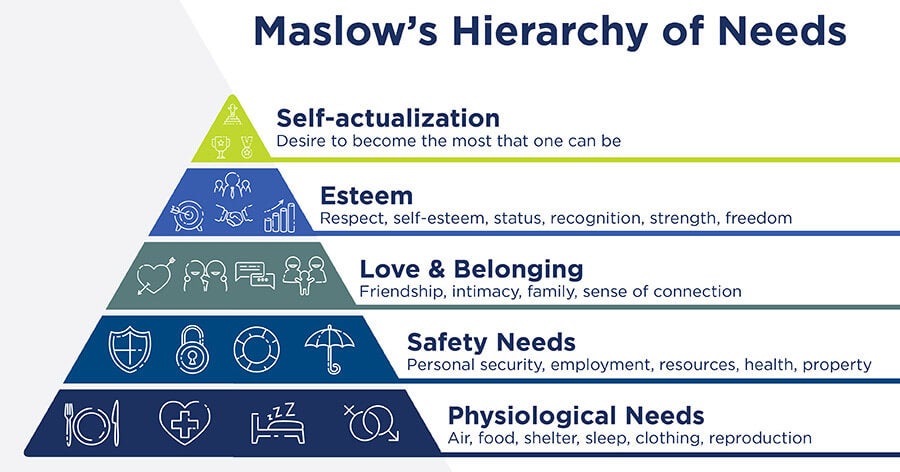October 18, 2022

There’s no denying it – the past few years have shaken up the workplace’s status quo in ways we’ve never seen before. Today, remote and hybrid work are everywhere, burnout and turnover are on the rise, and engagement is declining for the first time in years. All this, plus a new generation entering the workforce with their own unique set of values, wants, and needs.
These shifts have left HR departments everywhere reconsidering their retention strategies. And many are beginning to make employee recognition a priority for the future of their companies.
It’s no surprise why either. Recognition programs have been gaining popularity due to their ties to increased employee retention, engagement, and productivity. It may seem hard to believe that simple recognition can generate all these returns, but it’s true.
Employees - all human beings for that matter - want to feel seen and appreciated. And while there’s an art to giving effective recognition, there’s science behind it too.
The Science Behind Employee Recognition
It may be tempting to think of employee recognition as a trend, but unlike management fads of the past, recognition is based in neuroscience.
Recognition and Dopamine
Dopamine is a neurotransmitter produced in the brain. Dopamine stimulates the ventral striatum and nucleus accumbens - parts of the brain that process rewards and create positive emotions, like satisfaction and enjoyment.
It may sound unassuming, but dopamine in actuality is a powerful, highly addictive chemical. Evolutionary scientists believe dopamine was a key factor in helping early humans survive. After all, a dopamine hit after a dangerous, exhausting hunt would need to be pretty powerful to motivate a person to do it again and again.
And while most of us aren’t hunting gazelles for survival anymore, the powerful effects have lingered. Today, it can even drive people to seek out dopamine-inducing behaviors that aren’t always healthy, like using drugs and alcohol or overindulging in too many sugary treats.
But there are other ways to get a dopamine surge as well. And one way is through recognition.
When an employee’s hard work is acknowledged and appreciated, it provides the same dopamine surge as those early humans experienced. It’s powerful and motivating, and, most importantly for managers, reinforces the behavior. One study even found that receiving a compliment, like genuine recognition, is just as thrilling to the brain as receiving cash — both are perceived by the striatum as "social rewards."
That dopamine hit cements the knowledge that more of that behavior will create more praise, resulting in another dopamine surge, and so on. This is why positive reinforcement (recognition) works so well.
Recognition and Stress
The amygdala is a part of the brain that’s often referred to as the “emotional center.” It helps define and regulate emotions and it’s what activates our fight-or-flight response. In our normal day-to-day lives, the amygdala is most likely to activate in times of stress. This triggers a cortisol release from the adrenal glands and sparks feelings of anxiety, anger, and/or aggression.
Conversely, less amygdala activity is associated with feelings of less stress and anxiety. And while there are many ways to induce lower amygdala activity, one simple way is with recognition.
When we receive praise, the brain releases oxytocin – also known as the “feel good” hormone. Oxytocin can combat the effects of cortisol, but, like dopamine, the positive result of oxytocin wears off quickly. This means that while recognition is powerful, it needs to also be frequent to be most impactful.
Maslow’s Hierarchy of Needs

If you think back to high school, you might remember learning about Maslow’s hierarchy of needs. Maslow believed that every person has levels of needs that need to be fulfilled in order to live a happy, thriving life.
These levels include:
- Physiological – This level includes the most basic human needs for survival, like food, water, and shelter.
- Safety – Safety includes feeling physically and emotionally safe and secure.
- Social – Once base level needs are met, social needs can take place. This involves having meaningful friendships, feeling supported, and having a sense of belonging.
- Esteem – Esteem includes feelings of respect, recognition, and strength.
- Self-Actualization – Self-actualization occurs when someone becomes the best version of themselves possible.
When recognition is done well, it’s able to meet three of these needs: safety, social, and esteem.
Safety
It may sound surprising, but recognition can help offer your employees a feeling of safety. We’ve all lived through a global pandemic that left many without a job. There were layoffs and it seemed companies were going out of business left and right.
It’s important to now offer your employees a sense of job security; they need to know they don’t need to live in fear anymore of losing their income. Recognition can help offer this sense of safety by reinforcing that your employees’ skill sets are important for the bigger mission.
Social
Recognition can also offer employees a feeling of belonging. Whether recognition comes from peers or leaders, being recognized reinforces that your employees are in the right place, part of the right team, and doing the right work for their unique talents.
Esteem
Our need for esteem can also be fulfilled through recognition. When recognition is given, it shows that the recipient’s skills and personality are needed for the success of the team. This gives people feelings of pride, respect, and of course, self-esteem.
The Art of Recognition
Now that we know why recognition works, we need to know how to give it effectively - and this is where the art comes in.
Recognition may work for everyone from a biological standpoint but giving recognition in a way that is well received can be a bit more subjective. Each person on your team is unique – some may prefer private recognition to public while others might prefer a handwritten note to an in-person acknowledgement. There are countless variables, it’s easy to be overwhelmed.
Luckily, there are a few general guidelines that help ensure recognition makes an impact.
Frequency Matters
It’s critical that recognition occurs often and consistently. In fact, a Gallup poll found that recognizing employees at least once per week is best for employee recognition. Yet, 82% of employed Americans feel that their supervisors don’t recognize them enough for their contributions.
This discrepancy can leave employees feeling unseen and unimportant. Lack of acknowledgement gives employees the time to wonder if their work matters and if they should be doing something else. This can lead to disengagement and increased employee turnover.
Instead, managers and leaders should look for reasons to recognize their employees. Even if it’s something as small as thanking someone for always being on time, it’ll make your employee feel seen and valued – and less likely to look for opportunities elsewhere.
RELATED: How to Build an Effective Employee Recognition Program
Give Specific, Authentic Recognition
Managers may be tempted to give a broad “thank you” to their employees and hope it ticks the recognition to-do box. But unfortunately for busy managers, it doesn’t work that way. Recognition needs to be specific to be impactful.
It’s surprisingly easy to spot inauthentic recognition and once that happens, your whole recognition program could become undermined. If recognition feels generic, manufactured, or unenthusiastic, it can come across as pandering.
When giving recognition, either in person or in writing, consider the incident that sparked the acknowledgement and describe why it was significant. Discuss how this type of work impacts the company as a whole and helps you work towards achieving certain goals.
It’s important to not only thank the person for what they did but expressing how it plays a role in the bigger picture helps create a sense of purpose in their work. This is a critical aspect for building employee engagement.
Get Buy-In from Leaders
In describing the most memorable recognition they’ve received, 28% of people said it came from their manager. 24% said it came from a high-level leader or CEO. Furthermore, 53% of people say they want more recognition from their direct supervisor.
While peer-to-peer recognition is important, recognition that comes from the top-down really helps employees feel their work is making an impact. Manager-led recognition also helps build recognition into the culture of the company. It creates an environment where people begin to look for reasons to give appreciation – isn’t that a place we’d all like to work?
Real-Time Creates Positive Reinforcement
From what we know about dopamine and oxytocin being powerful feel-good chemicals that are short-lived, recognition needs to be immediate for it to have the most impact.
Essentially, recognition is positive reinforcement – it’s telling your employees to repeat a certain behavior and tying that behavior to those feel-good emotions. Waiting a few days, a week, or longer to give that recognition weakens the psychological tie from the emotion to the behavior.
Think of it this way, if your boss thanked you for something you did two weeks ago, would you even remember doing the thing in the first place. So, what are the chances you’ll repeat that behavior in the future? This is why it’s important to give recognition as soon as the event takes place to connect those happy emotions to the behavior.
Inclusivity is Important
It may sound obvious, but in order for recognition to be effective, it needs to be inclusive.
It’s an unfortunate reality of life that sometimes people are overlooked for their accomplishments, especially the more introverted members of the workforce. In fact, one survey found that while the workforce is generally split evenly between extroverts and introverts, 88% of supervisors are extroverted. Furthermore, only 2% of senior executives are introverts.
A common assumption from this data is that extroverts are better suited for leadership roles based on their skillsets. However, another study led by Professor Adam Grant found that introverted leaders outperformed extroverted ones when managing proactive employees.
This isn’t to say you should switch to only promoting introverts, but more so to shed light on the unsung heroes of your organization. Some of your top performers may be undetected by top leadership but are known well amongst the team for their work. This is where a recognition program that has a peer-to-peer element can help those under-the-radar employees get the appreciation they deserve, while shedding light on where your true talent may be hiding.
Make it Fun
At the end of the day, if recognition isn’t simple to give, accessible to all employees (including remote, deskless, and everyone in between), and fun to use, it’ll be hard to entice employees to buy-in. Online social recognition platforms help answer all of these needs and allow employees and users to own the process. This is what truly builds employee recognition into the culture of an organization.
Implement platforms that allow users to customize their recognition posts with memes, gifs, pictures, emojis, etc. With Terryberry’s social recognition platform, you can include features like:
- Custom branding
- Integrations with work tools such as Slack and Teams
- Employee Birthday + other Automations
- Advanced analytics and reporting
- Configurations to support multiple locations
- Single sign-on (SSO) and advanced permission settings
Why Use a Social Recognition Platform?
Research has found businesses that utilize a formal recognition platform have 31% less voluntary turnover and are 12 times more likely to experience strong business outcomes. Furthermore, employees who feel recognized are 2.7 times more likely to be highly engaged with their work.
If this is the case, then why doesn’t everyone utilize employee recognition programs? We know that even the best intentions regarding recognition, the day-to-day bustle of a busy workplace can result in frequent recognition being placed on the back burner. Client emergencies, machinery malfunctions, and pressing deadlines end up eating away the day, and before you know it, it’s been 50 days since you voiced any sort of appreciation for other employees.
An online social recognition platform, however, can help make recognition simple, fun, and effective.
RELATED: Social Recognition Software: What is it and Why Do You Need it?
Getting Started
Living in unprecedented times calls for leaders to rethink the status quo. Without making conscious efforts to adapt to changing times, companies are risking their employees leaving them behind. But leaders who are looking at the evolving needs and values of their employees will see retention, engagement, and morale rise.
Interested in learning more about how your company can benefit from a recognition program? Schedule a demo of Terryberry's 360 Recognition Platform today.
